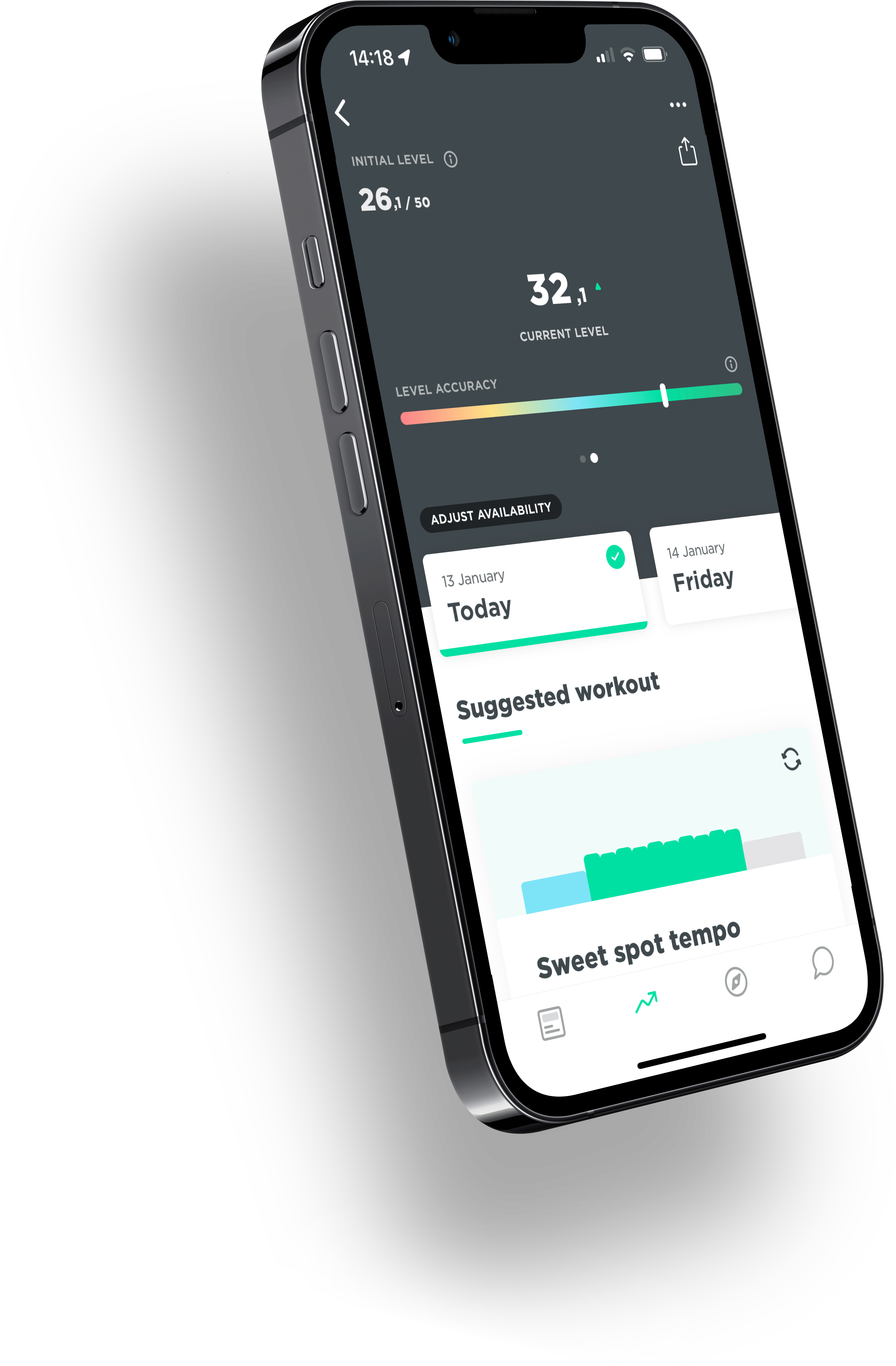Training with a power meter is more than just mounting the meter and connecting it to your Garmin or Wahoo. During your first ride you will see those power numbers jumping all over the place. And after a couple of rides with slightly higher average power numbers every time, you wonder what those numbers actually mean. Somewhat exaggerated, we sometimes say that when you buy a guitar, you can’t play the guitar right away. Although much less complex, this also applies to training with a power meter. We explain why in this article.
No delay
Training with a power meter allows you to see what your body does in terms of output delivered immediately. You do not have to wait for the physiological response as you do with heart rate, nor does the power meter take external factors into account. But still, despite the immediate availability of the data, if you don’t have a reference, you still don’t really know anything.
Know your FTP
So you must have this reference point if you want to benefit from training with a power meter. For this you need two things. First of all, you need to map your own performance. The most common way to do this is by determining your FTP. This is the maximum power you should be able to sustain for an hour. You can have this determined accurately with an exercise test in a lab or you can do a DIY, 20-minute test yourself on the road or on an indoor trainer.
Listen to your intuition
But in addition, you especially need to heed your intuition. One day is always different from the next; on a bad day you will have a lower FTP and therefore the power you are aiming for should also be lower. On a good day, of course, the reverse is true. Also, on a hot day you can lose more fluid than you can absorb or when it is cold and your blood flow is constricted, you cannot expect your performance level and thus your power output to be unaffected. So don’t just look at the numbers, listen to your legs and body as well.
Practical cycling tips
Finally, below we list some more useful tips that will help you get started just a little faster. The most important two, know your FTP and listen to your intuition, we have already given.
- Do not look too much at absolute power, but relate it to body weight. Even on the flat, wattage per kilogram often says more about someone’s level than absolute power.
- Never use instantaneous power in the display of your cycling computer. This jumps up and down too much. We recommend 3-second power as the most useful metric.
- In addition to the 3-second power value, you can also put a 30-second value and a 1-minute value on the screen. These are even less volatile and are useful to show what you are doing during your intervals.
- Focus on a constant cadence and feeling and not on a constant power. If you are constantly looking at your screen and trying to adjust your power output based on that, you will go nuts. Find a comfortable rhythm and gearing and then see if the power is about where you want it to be. Don’t look at the screen every 3 seconds to see if it is.
- Do not try to improve your average power on every ride. For example, a heavy interval training has a relatively low average power. It is better to look at normalized power (NP), which better reflects the variation in power and the strain on your body.
- Normalized power mainly works for stretches of at least 20 minutes. For short intervals the calculation of normalized power can give a distorted picture.
- Everyone has a left-right difference and that difference varies. In general, it gets smaller at higher Watts because you are engaging more muscle groups. So even if you are convinced that your left leg is weaker and you have a power meter that only measures your left leg, it makes very little sense to put your settings at 49-51% because the difference is not always the same. Don’t worry too much about any left-right differences. At a steady endurance pace, a deviation of 5% is quite normal.
- Replace the battery on time. Almost all power meters start giving wrong values when the battery voltage gets too low.
- Above all, compare your power with your own values. The power meter that always and consistently measures what it should has yet to be invented. Unfortunately, different brands often show large deviations that make it very difficult to compare the reading of those various meters.
Train on hearth rate or power?
And for the most important tip, a separate paragraph. If you train on power, only use heart rate in your analysis afterwards. In an ideal world when you ride in a certain power zone, your heart rate at that same moment is in the corresponding heart rate zone. However, this is not always the case. Because your heart rate has a delay, because you just overdid it in a very hard stint, because you trained hard yesterday, because you lost too much fluid, because you have stress at work, because you trained late in the day and were a bit tired, because you just had a strong cup of coffee, etcetera, we can go on for a while. So don’t go looking for this ideal world, but if you have a power meter just train on power. Afterwards you can check if the heart rate roughly matched what you did and if not then try to explain why not. If you don’t find the explanation, there is no need to panic. If your heart rates and power output remain far apart over multiple sessions, you should ask yourself whether your threshold heart rate and FTP are correct or whether something else (structural) is going on. Until then, nothing to worry about!


